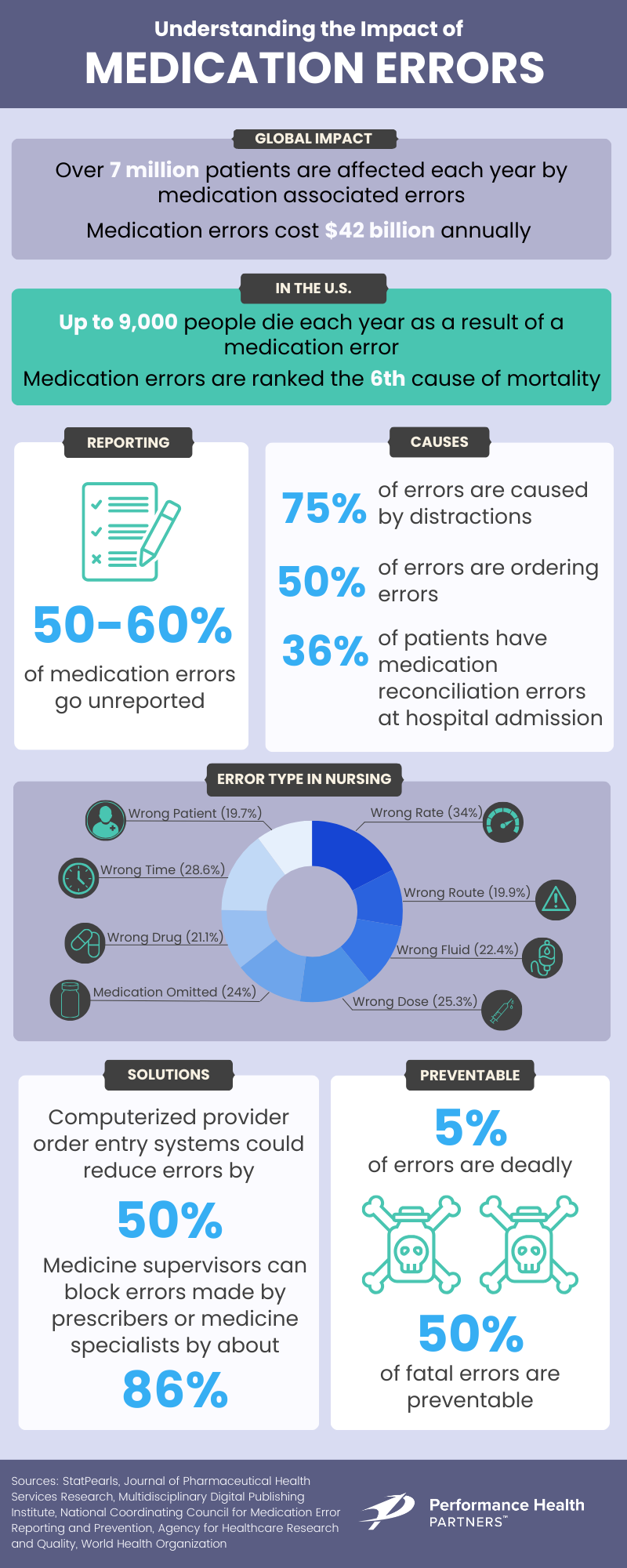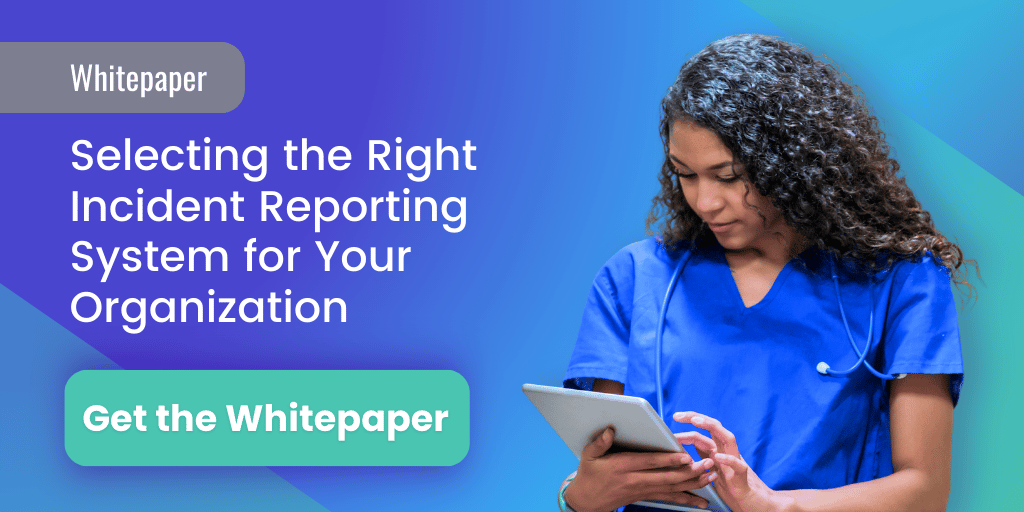2 min read
How to Prevent Medication Errors: A Simple Approach
Performance Health Partners
May 25, 2023

In the United States, medication errors have become one of the leading causes of injury and avoidable harm in healthcare organizations. These errors affect nearly 5% of hospitalized patients and can be detrimental to patient safety.
The Impact of Medication Errors
A single medication error may prolong a hospital stay by up to 10 days or even result in death. Consequently, the United States healthcare system estimates it spends over 20 billion dollars each year due to medication errors. With the adverse patient outcomes and high costs associated with medication errors, it is important for care teams to become familiar with common strategies to learn from previous medical errors and to reduce the likelihood of future ones.

5 Simple Tips for How to Prevent Medication Errors in Your Organization
Effective medication safety in healthcare organizations can be achieved with a few simple system changes or updates. The key is to standardize and simplify all processes. This will allow team members to help identify patient safety risk areas and leaders can prioritize resources and training around this risk. Reducing medication errors can ultimately create a healthier environment and improve the level of patient safety.
1. Use 2 Patient-Specific Identifiers
Failure to correctly identify patients frequently results in medication errors. To ensure that the right patient receives the right medication, have the patient identify themselves using two patient identifiers. This can include name, date of birth, phone number, or social security number.
2. Make Staff Aware of High-Alert Medications
The Joint Commission identifies a list of high-alert medications that require extra precaution when prescribed, administered, or refilled. Drugs such as insulin, opiates, and narcotics can cause serious patient harm when not used correctly. It is critical that practices identify a list of these medications that is easily accessible to all frontline staff.
3. Improve Physician Handwriting
It is estimated that one-third of all physicians’ handwriting is illegible. To ensure that all orders and prescriptions are clear, use a print script rather than cursive. Additionally, it is important to avoid any abbreviations that may serve as a barrier to effective communication. It is recommended to spell out each word when possible.
4. Organize the Storage Area
If the practice stores any medications on-site, staff should develop a system for routinely checking all medications and discarding any that have expired. The area should be maintained at an appropriate temperature so as not to spoil the substances. It is also important to organize shelves at eye level with good lighting, so staff are less likely to misread labels.
5. Offer Medication Counseling
Medication errors are often the result of poor patient education. Providers should practice giving both oral and written instructions for how to properly use medications. To demonstrate complete understanding and prevent unnecessary harm, it is important that patients can repeat back the information they have been given.
Evaluate System Trends to Help Prevent Medication Errors
Learning how to prevent medication errors is easy with Performance Health Partners. Our streamlined incident and event reporting solution makes it easy to report and analyze incidents to gather insights to implement sound strategies, helping prevent future patient harm.


